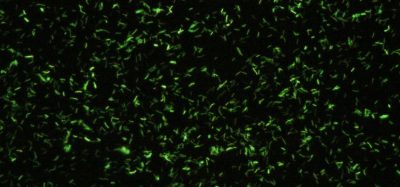New imaging technique allows early assessment of aortic aneurysm
Posted: 2 August 2017 | Dr Zara Kassam (European Pharmaceutical Review) | No comments yet
Researchers have developed a new imaging technique which allows early assessment of aortic aneurysm which could potentially be used to assess a patient’s rupture risk for abdominal aortic aneurysm…


Researchers have developed a new imaging technique 99mTc-RYM1 which allows early assessment of aortic aneurysm which could potentially be used to assess a patient’s rupture risk for abdominal aortic aneurysm, this new type of technique could allow physicians to diagnose disease and better plan its management.
“Studies in mouse models of aneurysm showed that that this tracer allows for imaging vessel wall biology with high sensitivity and specificity, and aortic tracer uptake in vivo correlates with vessel wall inflammation,” explains Dr Mehran M. Sadeghi, of the Yale Cardiovascular Research Center in New Haven and the West Haven VA Medical Center in West Haven, Connecticut.
Dr Sadeghi points out, “There is no effective medical therapy for abdominal aortic aneurysm (AAA), and current guidelines recommend invasive repair of large AAA. However, the morbidity and mortality remain high, so better tools for AAA risk stratification are needed.” The study results show that SPECT/CT imaging with this new tracer, 99mTc-RYM1, is a promising tool for this purpose and could provide new ways to manage AAA.
Looking ahead, Dr Sadeghi says, “Fulfilling the potential of molecular imaging in improving patient care and advancing research is critically dependent on the development of novel tracers with real potential for clinical translation. Remodelling and inflammation are fundamental biological processes which are implicated in the pathogenesis of several diseases, spanning from cancer to heart attack and stroke. MMPs play a key role in tissue remodelling and inflammation. Further development of RYM1-based imaging could expand the applications of molecular imaging and nuclear medicine, and improve patient management in a wide range of diseases.”
Abdominal aortic aneurysm (AAA) accounts for 10,000 to 15,000 deaths each year in the United States. Matrix metalloproteinases (MMPs) play a key role in the development of AAA, which is especially prevalent in older men with a history of smoking. The researchers at Yale University developed a novel, water-soluble MMP inhibitor that formed the basis for the new tracer, RYM1. In preclinical evaluation, RYM1–labelled with Tc-99m (99mTc) — was then compared with another MMP tracer in mouse models of aneurysm. The study is presented in The Journal of Nuclear Medicine.
Related topics
Related organisations
West Haven VA Medical Center, Yale Cardiovascular Research Center, Yale University School of Medicine





